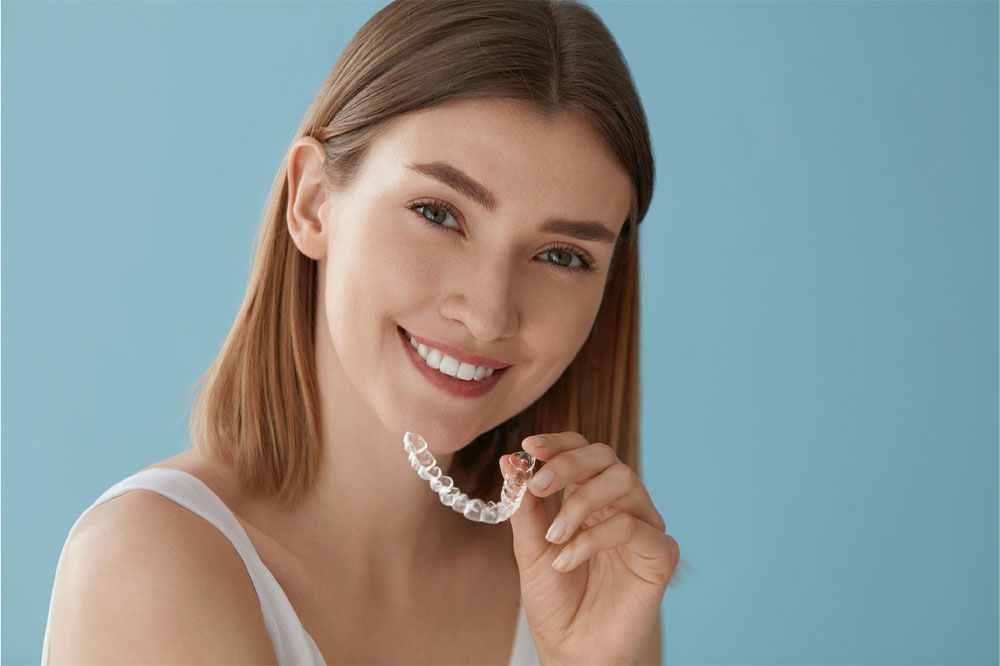
5 common types of dental braces
Braces mainly help correct the alignment of teeth for kids, adolescent teens, and even adults. The oral device can help with a large overbite, misaligned molars, overcrowding, correcting gaps, and streamlining the teeth. Over the years, innovation in materials used and technology have made braces comfortable to wear and beneficial in the long run. Here are the five main types of teeth braces you may find at the local orthodontist.
Traditional metal braces
Metal teeth braces are made up of several individual links affixed to the tooth held together by a metal string. The string is tightened by the dentist every four to eight weeks to manually correct the alignment of your teeth. It Metal braces are one of the most affordable options for young kids and adults. These braces cannot be removed once fixed, so, these are suitable for kids who may fuss or fidget with the removable options like clear aligners. While these traditional braces inexpensive, you must take good care of your teeth and the brace brackets for the duration of the alignment. Some people may need to wear braces only for a minor correction that can be done in a few weeks. Others may use it for well over a year depending on the severity of the misalignment.
Ceramic braces
Ceramic braces are an improvement to your traditional metal braces. Ceramic brackets mimic the color of your teeth or even use clear brackets to make them less noticeable. Some of the more premium braces also come with a ceramic-colored string that holds the brackets together. There is a little difference in the way these brackets work, but ceramic ones are slightly more expensive but less obvious than the metal ones. Although ceramic braces are more affordable in comparison to invisible aligners, they are a bigger nuisance to maintain in comparison to traditional brackets. Since the braces are clear, they can stain easily. Dentists recommend a strict oral-care regime to avoid damaging the brackets. On the bright side, ceramic brackets are stronger and last longer without the need for replacement of individual brackets.
Lingual braces
Not many people prefer lingual braces because only specially trained orthodontists can practice this form of treatment. It is a more expensive option but allows room for customization. They are slightly more efficient than traditional or ceramic braces. These lingual teeth braces are affixed at the back of the teeth, hiding them completely out of sight. However, due to the complex care that goes into maintaining these reverse brackets, it is not ideal for children. Even young adults opt for reverse brackets only to prevent others from noticing the braces.
Clear braces or invisible aligners
Clear aligners are a costlier option than traditional and ceramic braces. But with clear braces, you don’t have to worry about painful teeth brackets, wire tightening, and excessive oral hygiene. However, it is not suitable for people who need extensive teeth correction. Clear aligners are helpful in correcting minor misalignments like gaps in the front teeth or a large overbite. These teeth braces are removable, so you can brush, floss, and rinse without any hassles. Invisible aligners are made with a clear material using molds based on the teeth formation in your upper and lower jaw. And unless someone looks closely, it is impossible to tell the difference between the aligner and the teeth. Orthodontists also require you to visit them only a couple of times for routine check and maintenance. Moreover, it is possible to wear aligners for most part of the day and night for maximum benefit.
Self-ligating braces
While self-ligating teeth braces may look similar to the metal ones, the brackets are designed to allow the wire to slide and adjust as the teeth align. It eliminates the need for elastic bands that hold the wire and brackets in place. If you have extremely sensitive teeth, have special developmental delays, or require special orthodontic care, dentists recommend the use of self-ligating braces. Otherwise, you may opt for metal, ceramic or clear aligners.
After-care tips for teeth braces
After care is just as important as the actual fitting. Here are a few key points to consider.
- Avoid a number of hard foods and liquids that can stain or damage the brackets.
- Avoid sugary foods to lower the risk of decalcification (tooth decay).
- Since the brackets take up most of the space on the teeth, special brushes with angular bristles are recommended for proper cleaning.
- Try to avoid biting using your front teeth as it applies pressure on the bracket or aligner.
- Don’t miss out on regular appointments for bracket tightening and progress review as suggested by your dentist. The regular you are, the better will it be for the dentist to assess progress made and determine adjustments.




